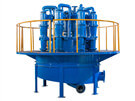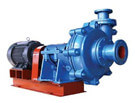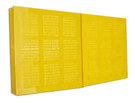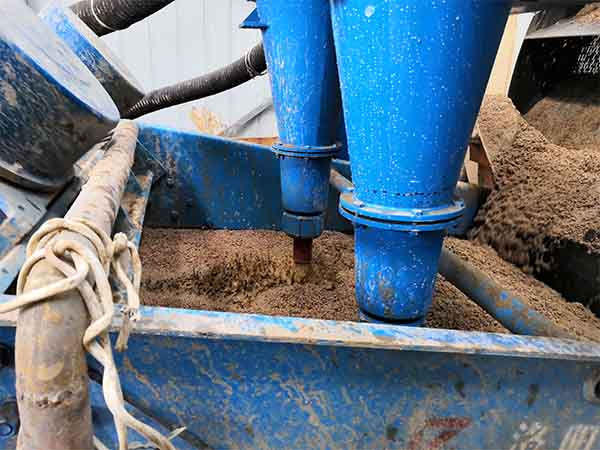Hot Product

- Hydrocyclone Group
Hydrocyclone group is widely used in coal preparation plant...

- Slurry Pump
Slurry pump is mainly used in mining, power plant, dredging, metallurgy...

- Polyurethane Dewatering Screen Panel
In addition to the performance of...
The Influence of The Inlet Velocity of The Hydrocyclone on The Classification Effect
Date: 2021-06-21 From: Longding Author: admin
Hydrocyclone is a commonly used classification equipment. The slurry needs a certain pressure to be fed to the ore, so what effect does the inlet velocity of the hydrocyclone have on the classification effect? The following mainly analyzes the influence of the inlet flow velocity on the velocity in the tangential, radial, and axial directions.
The movement form of the fluid in the hydrocyclone
There are six types of movement of the fluid in the hydrocyclone: outer spiral flow, inner spiral flow, short circuit flow, vortex flow, zero velocity envelope, and air column. After testing the distribution velocity of the hydrocyclone by a laser tester, in order to illustrate the velocity distribution of the liquid flow in the cyclone, the velocity field of the fluid is generally expressed in a cylindrical coordinate system as tangential velocity, radial velocity, and three components of axial velocity.
Tangential speed
In the outer space of the overflow pipe, the tangential velocity changes little along the radial direction. In the cone part, the tangential velocity increases with the decrease of the radius in most of the radius, showing a semi-free vortex motion. At 0.5~0.7 times the radius of the overflow pipe, the tangential velocity decreases with the decrease of the radius, showing a forced vortex motion. The maximum tangential velocity reaches 1.5 to 2 times the entrance velocity. With the increase of inlet flow velocity, the distribution of tangential velocity does not change, but the overall tangential velocity value shows an increasing trend, and the intensity of the flow field in the cyclone also increases.
Radial velocity
In the outer space of the overflow pipe, the radial velocity fluctuates up and down at zero speed. Like the tangential velocity, it increases with the decrease of the radius, but at the upper part of the cone near the wall, the radial velocity decreases with the smaller radius. At different inlet velocities, the velocity law is basically the same. As the inlet flow rate increases, the axial velocity value increases, which does not have a significant effect on the position and size of the axial zero-speed transition zone.
Axial speed
The liquid in the middle part flows upward, and the surrounding liquid flows downward, forming an asymmetric double loop flow. The outer circulation continues to expand in the downward flow and fills the entire area of the lower periphery of the overflow pipe. Part of it directly enters the overflow pipe, which is called short-circuit flow. In the cone part, there is a zero-velocity transition point between the downward flow of the outer layer and the upward flow of the inner layer. As the inlet flow rate increases, the curve height of the oil phase volume fraction also increases. The increase of the inlet flow rate will affect the oil phase distribution speed of the oil phase outlet, the larger the oil phase distribution is, the more concentrated the oil phase is on the axis.
Leave a Message
Here you can submit any questions and we will get back to you as soon as possible. We will not disclose the information you submit to anyone, please rest assured.



Inquiry